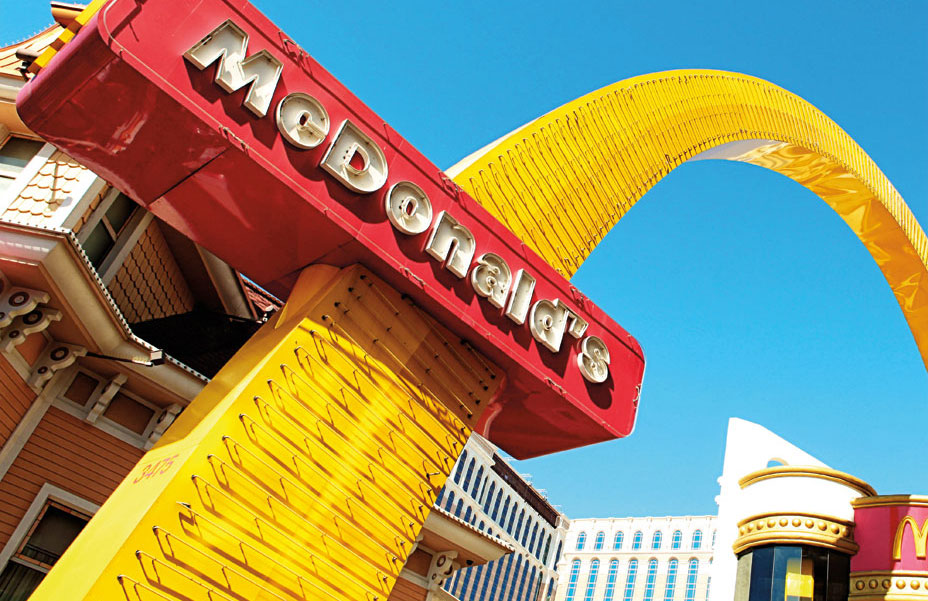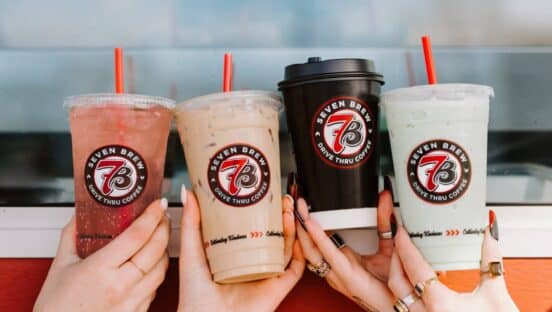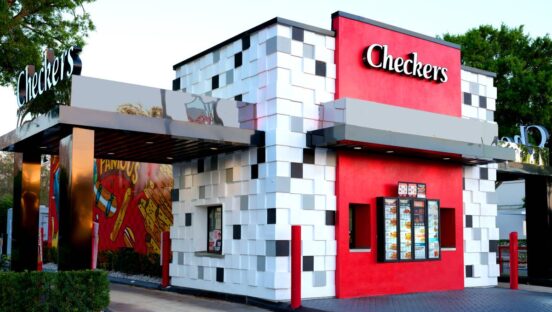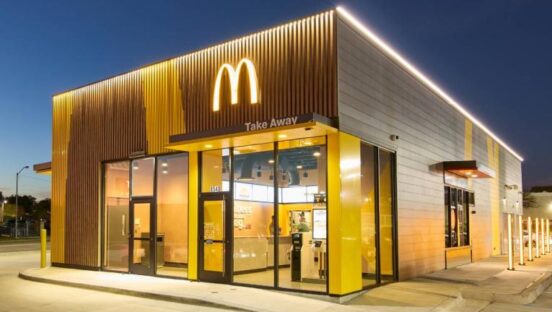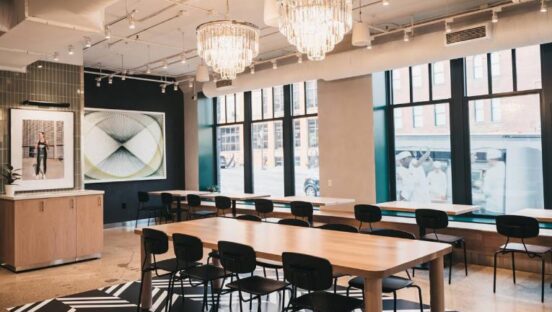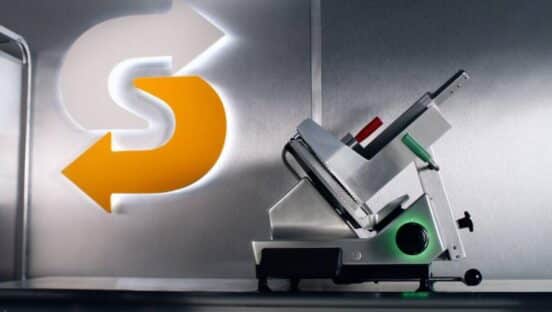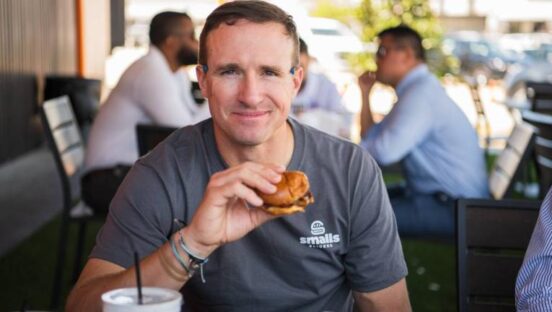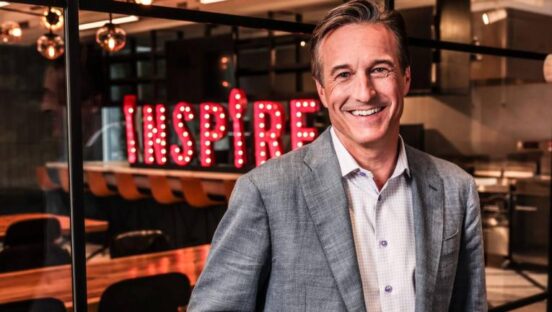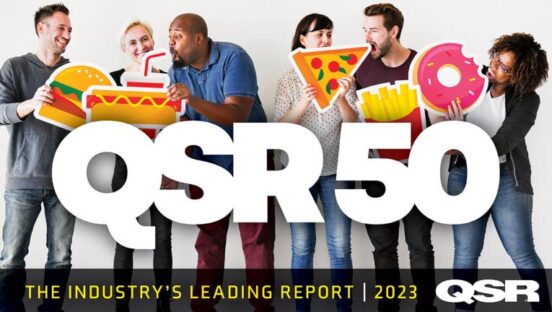In the limited-service restaurant industry, success is rarely a given. Performance ebbs and flows. Trends come and go. New competitors gobble up market share one year and then fade into oblivion the next.
[DOWNLOAD] QSR 50 Data 2008-2018
To make it as one of the most successful companies in this industry, restaurants must run the gauntlet of challenges necessary to scaling a concept, from establishing a loyal customer base to forming committed stakeholder relationships, and from building an efficient supply chain to navigating potential threats to the business. Indeed, only those companies that have put in the time and sweat equity can lay claim to being the biggest and the best in a $234 billion industry.
So what are the 50 most successful limited-service companies, and what are their secrets to success? Read on to find out.
01
McDonald’s
It’s not all been sunny skies for McDonald’s in Steve Easterbrook’s reign—quarterly reports have been a bit of a roller coaster—but the Brit, who is in his third year as CEO, has at least managed to keep the company focused on a few core objectives. Key among those is technology and its effect on how customers experience the brand; a new mobile-order-and-pay platform is rolling out to all locations, and a partnership with UberEATS is offering delivery from thousands of stores. There’s also the “Experience of the Future” prototype, which includes touch-screen kiosks and partial table service. The company hopes to update most of its freestanding U.S. locations to the new prototype by 2020 and is reportedly offering to help franchisees pay for the remodel.
02
Starbucks
Starbucks has entered another post–Howard Schultz era, as the company founder handed the CEO keys over to president and COO Kevin Johnson this year. Schultz remains active as chairman of the board and has turned his attention to developing the company’s Reserve Roastery concept, which is brewing up premium java options (including barrel-aged coffee and mocktails) at more urban locations across the country. Meanwhile, Starbucks has pledged a greater commitment to food; its Mercato line and Protein Boxes attract lunch crowds, while new developments like the Sous Vide Egg Bites appeal in the morning. The company is even partnering with grab-and-go specialist Snap Kitchen in several Texas locations.
03
Subway
Subway’s days of opening 1,000 locations a year appear to be over. In 2016, the company reported closing 359 locations as it struggled through its first year without founder Fred Deluca, who died of leukemia in 2015. Deluca’s sister, Suzanne Greco, took the reins as CEO and seems to be preparing the company for a new season of growth. Subway unveiled a new logo and branding last year, and this year made a play for millennial consumers by serving free mini sandwiches at several music festivals across the country. (Update: Subway last month unveiled a major new rebranding initiative. Read more here.)
04
Wendy’s
New Wendy’s CEO Todd Penegor inherited a company firing on all cylinders. Products like the Sriracha Chicken Sandwich, Crispy Chicken BLT, and Power Mediterranean Chicken Salad are innovative while remaining solidly within the brand’s wheelhouse, and the company’s commitment to value (the 4 for $4 deal) and freshness (reaffirming its fresh-never-frozen beef promise) continue to make it the strongest burger competitor to McDonald’s.
05
Burger King
Burgers may have helped the king take his throne, but recent menu innovations have strayed into other territories. Burger King has spent the last two years rolling out novelties (the Whopperito mash-up and the Mac n’ Cheetos) and entirely new platforms (Grilled Dogs, which the company claimed were one of its biggest menu investments ever). Meanwhile, its parent company, Restaurant Brands International, made a splash earlier this year when it acquired Popeyes Louisiana Kitchen.
06
Taco Bell
Taco Bell’s irreverence continues to win over younger consumers, as new items like the Naked Chicken Chalupa LTO (a taco with fried chicken as the shell) spark national conversation, and outreach materials like the brand’s Snapchat account and chatbot ordering platforms engage with Gen Z and millennials where they spend most of their time. Those older Taco Bell fanatics shouldn’t fear, though; the company continues to invest in its boozy Cantina concept, including a huge new Las Vegas flagship location. Next is more international expansion, which Taco Bell plans to ramp up in the next five years.
07
Dunkin’ Donuts
More of America is running on Dunkin’ as the company continues to expand its reach deeper into the country’s heartland. While seasonal food and beverage LTOs draw customers new and old, it’s the brand’s convenience factor that really seems to keep Dunkin’ aloft. Some 60 percent of the company’s traditional locations have drive thru, and sales are 23 percent higher at those stores. Now Dunkin’ is aiding the drive-thru process, rolling out On-the-Go Ordering to its mobile app, which lets guests order ahead of spinning through the drive thru.
08
Chick-fil-A
Let this fact sink in: Chick-fil-A, a quick-service concept with just over 2,000 locations that are closed on Sundays, enjoyed an average unit volume above $4 million last year. This unprecedented number speaks to the brand’s incredible fan affinity, which continues to spread as Chick-fil-A opens in more markets. Surely the top-shelf customer service plays a role, as do new menu items like Frosted Strawberry Lemonade, the Superfood Side, and the Smokehouse BBQ Bacon Sandwich.
09
Pizza Hut
Pizza Hut, the nation’s No. 1 pizza brand, might be sweating just a bit. Domino’s is quickly closing the gap between the two, and growth has stalled at Pizza Hut, which saw same-store sales drop 7 percent in this year’s first quarter. Parent Yum! Brands announced a $130 million plan to fix the brand, an investment that will go toward improving equipment and operations, as well as enhancing the brand’s digital strategy, which includes voice activation ordering and a new online pizza tracker.
10
Domino’s
Simply put, Domino’s is crushing it. A full seven years after the brand’s highly publicized do-over, the company cruises into the top 10 rankings, just on the heels of Pizza Hut as the country’s largest pizza chain. And there’s a good chance it could take the crown next year; Domino’s same-store sales increased a whopping 10 percent in 2017’s first quarter. Delivery remains its sweet spot, and the company is exploring new innovations in that realm, including with drones and specially designed delivery vehicles.
11
Panera Bread
The most successful fast-casual chain has enhanced its ordering platforms, with the Panera 2.0 kiosk system significantly cutting down on wait times and a delivery program adding a new touchpoint for busier-than-ever customers. Perhaps that’s what made Panera Bread so attractive to JAB Holdings, the private investment group that acquired the brand earlier this year for a reported $7.5 billion.
12
Sonic Drive-In
Same-store sales have been a bumpy ride for Sonic of late—down 7.4 percent in 2017’s Q2—but the company isn’t slowing down expansion plans. Sonic this year announced major franchising deals that will expand its presence in markets like Washington, D.C., and New York City.
13
KFC
The last few years weren’t looking so great for KFC. But with the recent Colonel Sanders marketing campaign, new store prototype, and fresh menu innovations under its wing, the chicken chain might finally have turned things around.
14
Chipotle
Is Chipotle finally out of the weeds after 2015’s food-safety nightmare? While its first full year after E. coli and norovirus sickened hundreds of customers across the country saw Chipotle’s sales drop significantly, there are signs that customers are finally returning to the Mexican fast casual; same-store sales were up 18 percent in the first quarter of this year.
15
Carl’s Jr./Hardee’s
The CKE brands made plenty of headlines because of former CEO Andy Puzder’s failed bid to become President Trump’s secretary of labor. But even more significant is what came after Puzder’s departure: The twin burger brands launched a new ad campaign veering away from scantily clad women and instead focusing on the tagline “Pioneers of the Great American Burger.”
16
Dairy Queen
While Dairy Queen is responsible for a massive share of the dessert dollars spent in the quick-service industry, the company sees the most potential in its food business. Expect more growth for its Grill & Chill concept, and a bigger commitment to its $5 Buck Lunch promotion.
17
Arby’s
CEO Paul Brown has managed an impressive turnaround job at Arby’s; the company has enjoyed 26 straight quarters of same-store sales growth at press time. Its creative marketing message and in-store investments have helped, but so have menu innovations like the Venison Sandwich, the Smokehouse Pork Belly Sandwich, and the Greek Gyro.
18
Little Caesars
Little Caesars made the rare menu addition this year, rolling out its $6 “ExtraMostBestest” pizza. The company claims the new offering has “the most pepperoni and cheese of any large round standard menu 1-topping pepperoni pizza sold by the other three major national pizza chains, at the very best price.”
19
Jack in the Box
As if the three traditional dayparts weren’t enough of a concern for Jack in the Box, the chain debuted its “Brunchfast” menu late last year, with items like the Bacon & Egg Chicken Sandwich, the Brunch Burger, and the Southwest Scrambler Plate. Meanwhile, rumors abound that the company could soon spin off sister brand Qdoba.
20
Popeyes Louisiana Kitchen
Popeyes has been on a tear ever since it rebranded in 2008, with much of the thanks owed to CEO Cheryl Bachelder and her vision for the company. Bachelder is now gone, though; many of the company’s leaders departed after Popeyes was acquired by Burger King and Tim Hortons parent company Restaurant Brands International earlier this year.
21
Papa John’s
Organic produce and clean labels aren’t just the property of regional chains and fast casuals anymore; Papa John’s is actively committing to both (although the organic push is just a small pilot program). Its new Pan Pizza and digital platform enhancements have similarly helped Papa John’s boost its credibility in the pizza game.
22
Panda Express
As the lone Asian concept on the QSR 50—one that is light-years ahead of its next closest competitor in the space—Panda Express surprisingly had never featured General Tso’s chicken on its menu before. That changed when the brand rolled it out as an LTO last year.
23
Whataburger
Whataburger’s loyal fans across the South and Plains states have a new way to interact with the brand. The company launched an app last year that not only offers a mobile payment platform, but also boasts a loyalty program that gives guests one free reward for every five visits to Whataburger.
24
Jimmy John’s
Roark Capital, the Atlanta-based equity group that has a stake in FOCUS Brands and Arby’s, acquired a majority stake in Jimmy John’s last fall. Founder Jimmy John Liautaud stayed on as the company’s chairman and the single largest individual shareholder.
25
Zaxby’s
As Zaxby’s has spread its wings across the country and established itself as the pre-eminent chicken fast casual, the company has embedded itself into sports fans’ collective consciousness. Its “Fanz of Flavor” Interactive Tailgate Experience visited several college campuses during last year’s NCAA football season.
26
Five Guys
Having celebrated its 30th anniversary in 2016, Five Guys has another milestone it can boast about in the better-burger wars: In this year’s Harris Poll, it was voted customers’ favorite burger chain—ahead of beloved California stalwart In-N-Out Burger.
27
Culver’s
Culver’s CEO Phil Keiser sadly passed away last fall; CFO Joseph Koss replaced him as chief executive. The company continues to expand further from its Midwest roots, with more locations opening in the Southwest and Southeast.
28
Bojangles’
Already a favorite in the South, Bojangles’ is taking its famed chicken biscuits further north, with expansion planned for the Mid-Atlantic states. The company’s new store prototype adds some modern flourishes, including a “Biscuit Theater” that showcases where the magic happens.
29
Steak n Shake
The 83-year-old burger chain remains an interesting enigma in the quick-service space, with news scarce and its head honcho, Sardar Biglari, a mysterious force behind the curtain. Yet Steak n Shake has steadily grown, and this year maintains its spot as the last chain into the billion-dollar-brand club.
30
Wingstop
Ever so close to crossing the billion-dollar sales threshold, Wingstop has been busy adding locations—not just in the U.S., but plenty overseas, too. Meanwhile, it’s joined some of the major quick-service brands in making investments in voice-activation, chatbot, and social media ordering platforms.
31
Papa Murphy’s
The take-and-bake specialists are in the midst of a rough patch, which includes a same-store sales decline of 5 percent in 2017’s first quarter and the closing of several locations. To help turn the ship around, Papa Murphy’s is investing in mobile ordering and a delivery platform through services like Amazon and Grubhub.
32
Checkers/Rally’s
Oak Hill Capital Partners purchased sister double-drive-thru concepts Checkers and Rally’s in a $525 million deal in March. The brands’ CEO, Rick Silva, said the deal was like “throwing gasoline on a fire” for the company’s expansion plans.
33
Jersey Mike’s
This year’s biggest chart climber? That’d be Jersey Mike’s, which leaps seven spots after padding its store count by more than 100 units and its sales by about $150 million. Its explosive growth continues unabated as demand for high-quality sandwiches continues.
34
Qdoba Mexican Eats
Fresh off a name refresh and corporate move to San Diego—where parent company Jack in the Box is based—Qdoba is apparently on the chopping block. Jack in the Box CEO Lenny Comma said earlier this year that the “overall valuation of the company is being impacted by having two different business models.”
35
Church’s Chicken
The chicken quick serve is struggling and experienced the biggest slide on the QSR 50, falling four spots. But the company recently signed its biggest development deal with Goalz Restaurant Group, which will develop 20 Church’s Chicken restaurants per year in six states.
36
El Pollo Loco
As it grows slowly eastward—including expansion in Texas and Louisiana—El Pollo Loco honored its Los Angeles roots with its “Road to Authenticity” campaign. The campaign recognized the brand’s heritage with a nod to L.A.’s vibrant Latino culture.
37
Del Taco
Del Taco continues to add to its Epic Burritos lineup—17-ounce Huevos Rancheros Burrito, anyone?—while it also added a new lineup of Platos, which are individually plated meals. The company’s growth has mostly revolved around a franchise push in the Southeast U.S.
38
White Castle
Get ready for White Castle 2.0. The company announced that a new prototype would debut in 2018 and will feature outdoor seating and a digital experience that will include mobile POS ordering and an interactive drive thru.
39
Tim Hortons
Tim Hortons enjoyed 5.2 percent global system-wide sales growth in 2016, but trouble could be brewing; a group of franchisees filed a $500 million lawsuit against parent Restaurant Brands International, alleging breach of contract and mismanagement of money.
40
Moe’s Southwest Grill
Moe’s showed off some new decorations in 2016, rolling out in-store artwork that features “foodscapes” of famous musicians. Some of the artwork featured augmented reality, allowing guests to interact with the art through the brand’s mobile app.
41
Firehouse Subs
To increase its guests’ visit frequency, Firehouse Subs—which crossed the 1,000-unit milestone in 2016 and expanded to Mexico for the first time—introduced a line of Small Subs that are 3.5–4 inches long and have a price point that starts at $3.99.
42
Boston Market
Boston Market is in the midst of shifting its chicken supply to birds raised without the use of antibiotics, and the company claims that 100 percent of its rotisserie chickens will be antibiotic-free by the end of 2018’s first quarter.
43
Jason’s Deli
Having turned 40 in 2016, Jason’s Deli also made the very modern move of partnering with DoorDash to offer door-to-door delivery, starting with the Houston and Dallas markets.
44
In-N-Out Burger
Thirty-five-year-old In-N-Out owner and president Lynsi Snyder became one of the youngest billionaires in the U.S. earlier this year when she received the remaining half of the company’s shares, all of which has been valued around $1.3 billion. For more on how In-N-Out continues to earn cult status among obsessed customers.
45
Baskin-Robbins
Baskin-Robbins has the lowest AUV of any brand on the QSR 50, but that hasn’t stopped the Dunkin’ Brand from slowly growing on the backs of its ever-rotating list of ice cream and cake flavors.
46
McAlister’s Deli
The FOCUS-owned fast casual crossed the 400-unit mark and continues to expand its reach across the U.S. Paul Macaluso took over as president in December.
47
Noodles & Company
One of the fast-casual originators has fallen on hard times. The company suffered a security breach last summer and earlier this year announced that it would close 55 under-performing stores.
48
Auntie Anne’s
The pretzel purveyor is a known staple in the U.S. and 28 other countries, but hopes to further its presence abroad. Along with sister FOCUS brand Cinnabon, Auntie Anne’s announced intentions to aggressively expand internationally, including in China.
49
Captain D’s
The lone seafood concept on the QSR 50 is slowly building its sales and expanding its geographic reach. Its Captain D-Lites menu of options 500 calories or less offers an appealing draw for the health-conscious crowd.
50
Jamba Juice
In his year-end remarks on Jamba’s 2016 performance, president and CEO Dave Pace said the company plans to focus on “energizing the brand,” which included exiting “non-core businesses” like its JambaGo self-serve machines.

